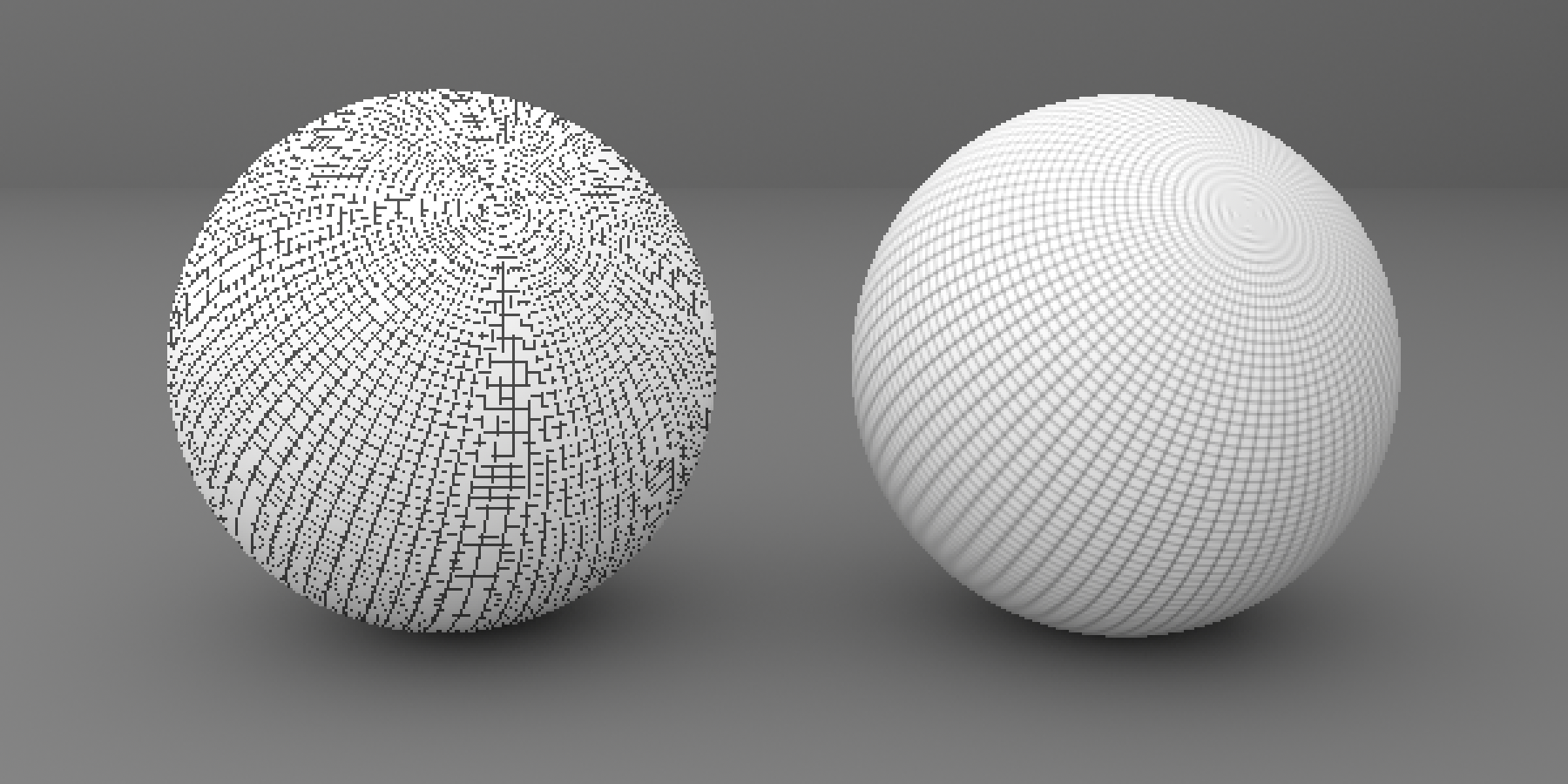10 Textures and Materials
The BRDFs and BTDFs introduced in the previous chapter address only part of the problem of describing how a surface scatters light. Although they describe how light is scattered at a particular point on a surface, the renderer needs to determine which BRDFs and BTDFs are present at a point on a surface and what their parameters are. In this chapter, we describe a procedural shading mechanism that addresses this issue.
There are two components to pbrt’s approach: textures, which describe the spatial variation of some scalar or spectral value over a surface, and materials, which evaluate textures at points on surfaces in order to determine the parameters for their associated BSDFs. Separating the pattern generation responsibilities of textures from the implementations of reflection models via materials makes it easy to combine them in arbitrary ways, thereby making it easier to create a wide variety of appearances.
In pbrt, a texture is a fairly general concept: it is a function that maps points in some domain (e.g., a surface’s parametric space or object space) to values in some other domain (e.g., spectra or the real numbers). A variety of implementations of texture classes are available in the system. For example, pbrt has textures that represent zero-dimensional functions that return a constant in order to accommodate surfaces that have the same parameter value everywhere. Image map textures are two-dimensional functions that use a 2D array of pixel values to compute texture values at particular points (they are described in Section 10.4). There are even texture functions that compute values based on the values computed by other texture functions.
Textures may be a source of high-frequency variation in the final image. Figure 10.1 shows an image with severe aliasing due to a texture. Although the visual impact of this aliasing can be reduced with the nonuniform sampling techniques from Chapter 8, a better solution to this problem is to implement texture functions that adjust their frequency content based on the rate at which they are being sampled. For many texture functions, computing a reasonable approximation to the frequency content and antialiasing in this manner are not too difficult and are substantially more efficient than reducing aliasing by increasing the image sampling rate.

The first section of this chapter will discuss the problem of texture aliasing and general approaches to solving it. We will then describe the basic texture interface and illustrate its use with a variety of texture functions. After the textures have been defined, the last section, 10.5, introduces the Material interface and a number of implementations.